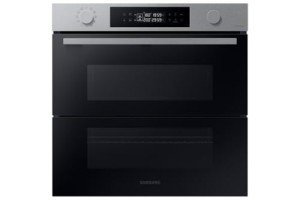Integrated Kitchen: The Good, The Bad, And The Ugly
The Integrated Kitchen: A Harmonious Blend of Functionality and Aesthetics
In today's fast-paced world, the kitchen has actually progressed from a mere cooking area to a multifunctional hub that balances with the total circulation of the home. The integrated kitchen concept is at the leading edge of this change, integrating visual appeals with performance. This short article looks into the concepts of integrated cooking areas, their benefits, and necessary design components, guaranteeing you understand what makes this modern kitchen layout so appealing.
What Is an Integrated Kitchen?
An integrated kitchen is designed to effortlessly blend with the other living spaces in a home, eschewing the traditional separation of the kitchen from the living and dining locations. This approach highlights open floor strategies, effective use of area, and cohesive design to produce a unified look.
Secret Features of an Integrated Kitchen
Open Layout: The significant function of an integrated kitchen is its openness. russell hobbs built in double oven in between the kitchen, dining, and living locations are often eliminated to develop a free-flowing area.
Unified Design Aesthetics: The design of an integrated kitchen often shows the style of the adjacent areas. Cabinets can match the living-room furnishings, and color pattern can be collaborated for an unified look.
Practical Zones: While it is open, an integrated kitchen still maintains practical zones— cooking, preparing, and dining— to guarantee usability.
Smart Storage Solutions: Integrated cooking areas make use of clever storage alternatives like pull-out cabinets, hidden appliances, and built-in shelving to keep clutter at bay.
Multi-Use Furniture: Island countertops, for example, are not just for prep work however can act as dining surfaces or common areas.
Advantages of an Integrated Kitchen
The combination of kitchens produces various advantages:
Benefit
Description
Space Optimization
Optimizes the use of readily available space, especially in smaller sized homes.
Improved Social Interaction
Fosters interaction and interaction amongst household members while cooking, dining, or entertaining.
Increased Natural Light
An open design permits for better light distribution, making the area feel larger and brighter.
Visual Appeal
Creates a more visually enticing living area with a cohesive design.
Increased Home Value
Modern, stylish integrated kitchens can substantially enhance a property's market value.
Style Elements to Consider
For homeowners seeking to create an integrated kitchen, several aspects must be thoroughly thought about:
Color Scheme: Choose a color scheme that streams throughout the home. Neutral colors are flexible and tend to mix well.
Flooring: Use constant flooring product. Circulation from the kitchen to the living-room can be enhanced by matching tiles or wood.
Lighting: Incorporate layered lighting, including ambient, task, and accent lighting to boost performance and aesthetics.
Appliances: Select built-in or panel-ready appliances to maintain a seamless appearance.
Island or Peninsula: Consider setting up an island or peninsula that can serve several functions— cooking, dining, and socializing.
Sustainable Practices in Integrated Kitchens
As sustainability ends up being a growing concern, incorporating environmentally friendly practices into kitchen style can be helpful. Here are some tips:
- Energy-Efficient Appliances: Invest in ENERGY STAR-rated appliances to minimize energy usage.
- Sustainable Materials: Opt for cabinets made from recovered wood or bamboo, both environment-friendly and trendy.
- Low-Flow Fixtures: Use water-saving faucets and fixtures to promote water conservation.
- Recycling Stations: Designate areas for recycling and composting to motivate sustainable living.
FAQs About Integrated Kitchens
What is the average cost of an integrated kitchen?
The expense of an integrated kitchen differs widely, depending on size, products, and complexity. Usually, homeowners can anticipate to spend in between ₤ 20,000 and ₤ 50,000.
How do I make sure proper ventilation in an integrated kitchen?
Appropriate ventilation can be attained through powerful range hoods, windows, and the tactical positioning of exhaust fans to eliminate cooking odors efficiently without interrupting the open circulation of area.
Can integrated kitchen areas work in small homes?
Absolutely. Integrated cooking areas can make small spaces feel larger and more inviting by breaking down walls and enabling versatile designs.
What design style fits an integrated kitchen best?
Integrated kitchen areas can fit a range of styles, consisting of contemporary, modern, and rustic designs. The secret is to keep a cohesive visual throughout the open space.
Are integrated kitchens more costly than conventional kitchens?
The general cost depends upon numerous aspects, consisting of design choices and products utilized. Frequently, integrated styles can be attained within a comparable budget plan, particularly when thinking about the worth they include to a home.
An integrated kitchen exemplifies the development of living spaces in contemporary homes, combining visual appeals with performance. By making it possible for open designs, promoting social interaction, and utilizing smart storage, these cooking areas offer a desirable environment for cooking, entertaining, and household bonding. As more house owners acknowledge the many advantages of an integrated kitchen, this style trend is most likely to continue growing in appeal, reshaping the method we believe about our most essential area.
